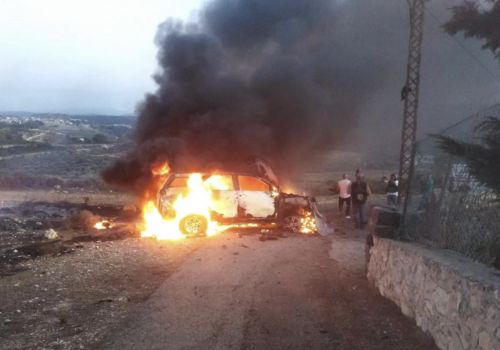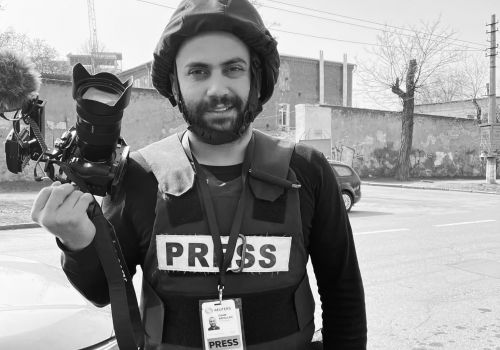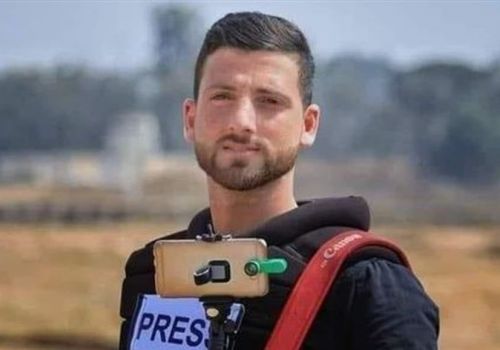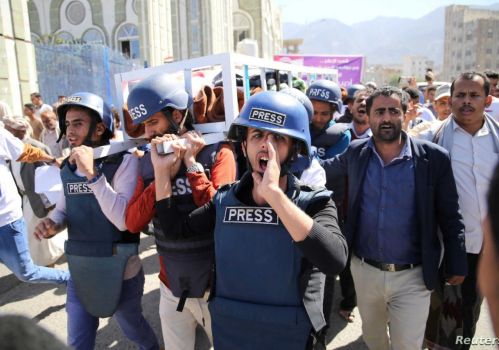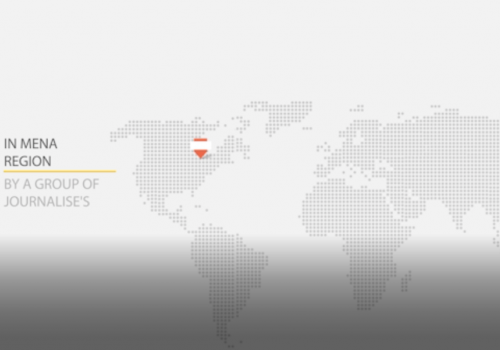Hold the Line: Reporting without Phone or Internet Access
2022-05-27 12:03
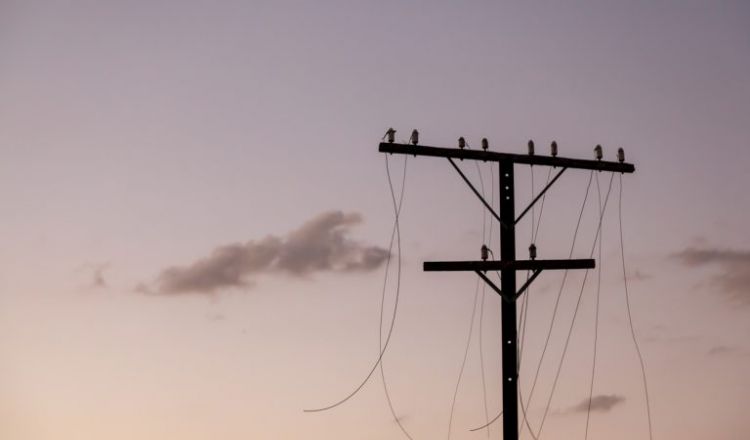
by Aishwarya Jagani-theopennotebook
When Mexico City–based journalist Humberto Basilio was reporting a story for Spanish-language magazine Distintas Latitudes (Different Latitudes) about the water crisis in Mexico in 2021, he booked a two-week field trip to a rural Indigenous community in El Nandho, a small village tucked away in the mountainous state of Hidalgo. Once there, he discovered that El Nandho had no internet connectivity, nor did it have a functioning mobile network—crucial tools for most working journalists. “Every time we needed to make a phone call,” Basilio says, “we had to travel to the capital of the state,” about an hour and a half away. “We didn’t have a car, so we had to use public transport every day.”
Basilio’s experience is not uncommon. In many regions, mobile data can be prohibitively expensive, and persistent power cuts and internet throttling (a deliberate attempt by some governments to silence independent media and citizen reporters by slowing down the internet) plague many countries around the world. Such problems can occur in both rural and urban areas.
When reporters or their sources cannot communicate with the outside world, important stories may go untold and entire communities or regions may go unheard. Lack of connectivity can also hamper reporters’ ability to communicate with their editors, or even to file their stories. Frequent power outages and poor internet connectivity can eat into independent journalists’ income, because each story takes longer to finish. In sub-Saharan Africa, for example, a single gigabit of data can cost nearly 40 percent of the average monthly wage, notes Stephen Tsoroti, a health and environment journalist in Harare, Zimbabwe, in an email.
But it’s usually possible to find a way to tell compelling science stories despite phone and internet inaccessibility if journalists and editors are able and willing to go the extra mile. Although connectivity issues made Basilio’s reporting in El Nandho significantly harder, he managed to finish his story by working around the obstacles—for example, travelling to the city three days a week to make phone calls and schedule interviews and using the rest of his time to engage in person with the communities he was chronicling.
Plan Ahead and Cast a Wide Net
One way to get the testimonies of potentially important sources who don’t own phones or are unreachable online is to get in touch with people who have worked with them in the past—then take it from there. That’s exactly what Basilio did while reporting a story for Eos about an AI tool that could predict sea-ice levels in the Arctic. He wanted to feature a member of the hunting community in Alaska, but he didn’t know anyone in the region and tracking down Arctic hunters on the internet wasn’t an option.
So Basilio contacted an Arctic researcher who suggested that a community elder named Bobby Schaeffer might be able to help. Schaeffer, however, didn’t use the internet or own a phone. The only way to make an interview happen was for Basilio to wait for his contact to run into Schaeffer, and act as a liaison. The plan was for the researcher to arrange an in-person meeting with Schaeffer, then email Basilio with an exact time to call, so that Basilio could interview Schaeffer by calling the researcher’s phone while Schaeffer was with him.
“I ended up waiting for that email for three weeks,” Basilio says. But it was worth the wait, he says, because Schaeffer’s voice made his story much more impactful.
Other strategies for reaching key sources can include cold-calling nongovernmental organizations, health centers, spiritual organizations, houses of worship, or local merchants who are connected with a community and might be able to help a reporter get in touch with a source who is off the grid or whose name doesn’t come up in an internet search.
To talk to Mayra Pop, a 14-year-old girl from an Indigenous community in Guatemala who was fighting a legal battle against child marriage, Ecuador-based reporter Lisette Arévalo sought help from the director of a foundation that worked with young girls in the area. The director, who often visited Pop in her home village of China Cadenas, was able to help Arévalo coordinate specific time slots when Pop would travel to the main city, where there’s mobile connectivity, so she could chat with Arévalo over WhatsApp.
Be Flexible
No single strategy is likely to be effective in all cases: Different stories and sources call for different approaches. Arévalo’s encounter with Pop was a case in point. In working on a different story, an audio feature for NPR’s Radio Ambulante on Guatemalan midwives, Arévalo was able to get great quotes through WhatsApp voice notes, a feature that allows users to record audio memos and send them instantly in a text conversation but that requires less bandwidth than a call would. But in interviewing Pop, Arévalo noticed that the girl seemed uncomfortable with using voice notes. Her responses to Arévalo’s questions were clipped, as if she felt shy or uncomfortable to elaborate.
When connectivity poses a regular challenge in your reporting, it makes sense to make contingency plans in case of unforeseen disruptions.
Since getting to the crux of Pop’s story was Arévalo’s priority, she decided to opt for a WhatsApp call even if that translated into poorer quality audio. Ultimately, she used a combination of audio calls and text messages to capture that story for the podcast episode “I Will Not Marry.”
Much like Arévalo, British-Pakistani journalist Mehr Husain emphasizes the importance of staying open to unconventional methods of communication with sources while being attentive to their needs, even if some richness or color are compromised in the process. “I don’t think we should limit our sources by saying, for instance, that we’re only available on Zoom or Skype,” says Husain. “Accessibility is a luxury. I think as journalists we have to be very conscious of what is easy and convenient for a source, and what will work best for them and those around them.”
Make Backup Plans
When connectivity poses a regular challenge in your reporting, it makes sense to make contingency plans in case of unforeseen disruptions. To counteract the power outages that can easily derail her work, for example, Esther Nakkazi, a science journalist and founder of the Health Journalist Network in Uganda, a country that suffers frequent power outages, uses a small solar panel to charge her laptop and phone when the electricity is out.
Similarly, Tsoroti has invested in back-ups such as power banks and solar- and fuel-powered generators. He also creates “virtual libraries” of content that he can view offline. “[You can use] apps like Pocket where you can store articles, videos, and images, and easily catch up on them later, when there is no internet [or mobile] access,” he explains.
Other reporters sometimes resort to old-school journalism practices when they lack internet access—for example, dictating entire stories to editors over the phone. Ugandan journalist Vivian Agaba recalls that during recent elections in Uganda, the internet—and by extension all VPNs—was shut down. “The only way to communicate was through phone calls or SMS,” Agaba says. “What some journalists were doing were getting in touch with editors and telling them what they saw on the ground, and [the editors] were then writing the stories.”
Clue In Your Editor
If reporting plans fail or obstacles arise, some reporters—especially freelancers—can be reluctant to inform their editors right away, out of fear that doing so might compromise their editors’ opinion of them or undermine their future prospects. Ankita Anand, a freelance reporter in New Delhi and an editor at Unbias the News, says that sometimes journalists need to be reminded that they’re not alone, and that they should reach out to editors for help when they find themselves in a tough spot.
While shoe-leather journalism may be the obvious solution when phone and internet reporting isn’t an option, there are some factors—and specific challenges—to consider before taking that route.
“I used to feel, as a freelancer, that I have to have all the answers and have to get everything ready,” Anand says. If not, “I would feel like I failed or [that] the editor would feel like I did not manage to pull off [what] I promised in my pitch.”
But as Basilio observes, keeping editors in the loop is a great way to avoid delays and other awkward situations, and is often essential to keep a story on track. When he was reporting his Eos story and running into difficulty contacting Schaeffer, Basilio wanted to avoid surprising his editor with last-minute requests for extensions or extra funding for field trips, so he alerted his editor early on about accessibility issues and related the researcher’s unconventional offer. His editor supported the plan, agreeing that Schaeffer’s perspective was critical to the story.
“She told me to take as much time as I needed,” Basilio recalls. After the story was finished, he says, his editor even told him that if he ever faces a similar situation, he “should not hesitate to make them wait two or three weeks*, if it results in a story of this quality.”
Collaboration Can Improve Accessibility and Aid Local Reporters
While shoe-leather journalism may be the obvious solution when phone and internet reporting isn’t an option, there are some factors—and specific challenges—to consider before taking that route. For instance, trips to rural or far-flung areas can be costly—both in terms of money and carbon footprint. For that reason, Martha Henriques, editor of Future Planet, a branch of the BBC, says that a reporter’s location and proposals for travel are considered from the start of the commissioning process.
“We encourage writers to look for stories in their region, so they can report from locations they can access by public transport, or if that’s not practical, then by car,” says Henriques in an email. “It helps reduce emissions from travel, and it also helps get under the skin of a story—local writers are often the ones who know their region best, and the specific local challenges and context.”
If travel is not a viable option—either because of expense or because of restrictions or closures due to wars, conflict, or public health emergencies—finding a journalist who is local to the region where the story takes place might be the best way to go. It’s also sometimes the only way narratives from areas that are underrepresented in the media will see the light of day.
Henriques works with groups such as the Solutions Journalism Network to seek out local writers or put a call out on social media. “I also read around for impressive stories in local publications to find talented freelancers,” she says.
If a nonlocal journalist needs to be part of the story, whether to provide guidance, a certain outlook or because they’re pursuing an idea that they’re passionate about, this is when collaboration with a local journalist can be ideal.
As an added benefit, collaborations can foster compassion between peers, according to Anand. She recalls traveling to Zimbabwe in 2019 and working with Tsoroti on a story covering illicit gold mining. The trip, she says, helped her develop empathy towards her reporting partner and his daily struggles. “The very first day, the power was out for several hours,” she recalls. “We had to use our mobile phones for light, and our devices were quickly getting discharged. We had to call up hotels asking if they had electricity.”
Collaborating on that story meant that Anand and Tsoroti were both working to their strengths and complementing each other: Tsoroti contributed deep insights and first-hand knowledge of his country, and Anand came in with fresh perspective and a bigger picture, and took internet-intensive tasks off her partner’s plate when required.
Anand also pointed out the vital role that editors play in supporting reporters in challenging moments.
For editors in well-resourced newsrooms in which internet connectivity is seldom—if ever—a problem, it can be easy to forget how challenging it may be for some reporters to access this fundamental resource. But in tough moments, an editor’s support can go a long way, says Anand.
“Even if you’ve done your research … you may still run into some unexpected challenge that you might not have thought of. But a good editor will do whatever it takes to support you,” she says. For newsrooms that want to include the voices of marginalized and disadvantaged journalists, being aware of internet and communication inequities and asking reporters what they need to be able to do their work well is an important step.
“As editors, if we want on-ground stories, then we also have to be flexible and compassionate about a journalist’s situation,” says Anand. “We try to be sensitive to people’s very specific contexts and locations, even if ours are different. That’s how you get diversity and on-ground reported stories.”
* Correction 5/24/22: An earlier version of this story stated that Humberto Basilio’s editor told him he “should not hesitate to make them wait two or three months, if it results in a story of this quality.” Basilio meant to say “weeks,” not “months.”

